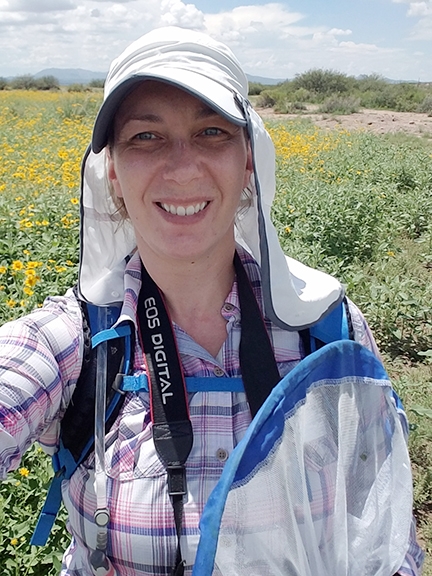
Several UC Davis bumble bee enthusiasts--encouraged by native pollinator specialist Robbin Thorp, UC Davis distinguished emeritus professor of entomology--compete every January to find the first bumble bee of the year in Yolo and Solano counties.
It's a friendly competition. Gamers include Allan Jones, Gary Zamzow, both of Davis, and yours truly.
We have a winner!
Drum roll...
On Thursday, Jan. 10 doctoral student Kim Chacon photographed a black-tailed bumble bee, Bombus melanopygus, on manzanita blossoms in the UC Davis Arboretum and Public Garden.
What a delightful find! And in between the rain drops!
This species is native to western North America, ranging from California to British Columbia and as far east as Idaho. It's commonly found on manzanitas, wild lilacs, wild buckwheats, lupines, penstemons, clovers, and sages, among others.
Chacon actually spotted an earlier bumble bee on Jan. 9 at 2:10 p.m. in the UC Davis Arboreutm, but had only her cell phone with her that day. It was a Bombus melanopygus on Arbutus in the Ericaceae section.
She captured some images with her cell phone, but "there was a big downpour about 15 minutes and I didn't bring my good camera, so I went home for the day. I know from my research that this particular location in the Arboretum is a hot spot for bees. The banks and flowering vegetation get plenty of sun. There are three possible spots in the Arboretum, according to my research, and this one had blooming flowers first."
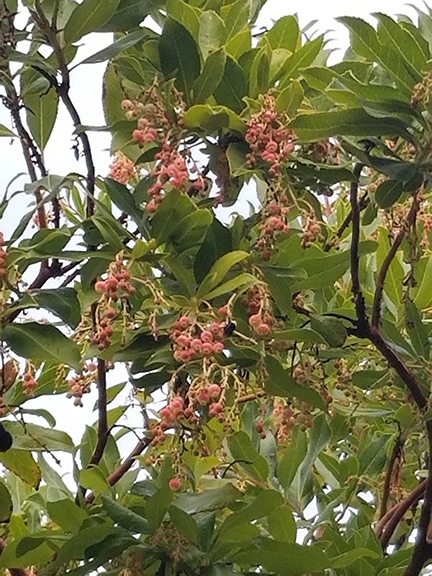
But on Jan. 10, "I woke up determined to get good photos with my good camera!" She walked over to the Ericaceae section again in the Arboretum and spotted a Bombus melanopygus at 3:58 p.m. (See photos below)
Chacon, a UC Davis PhD student in geography, studies "habitat connectivity issues for bees at a landscape scale."
"Lack of habitat connectivity is listed as the main reason for native bee declines and yet, thus far solutions only include stand alone gardens, with randomly spaced unspecified plant species," she commented. "A spatial habitat problem such as destruction and fragmentation needs a spatial solution. I am working on solving this complex problem with the help of Geographic Information Systems (GIS). Part of my research involved weekly monitoring bee visitation of bees throughout the UC Davis Arboretum for one full year. I learned about the trends of bee-flower visitation within each unique themed garden, specifically, how they function as novel ecosystems. When I graduate I hope to design effectively connected landscape habitat for bees. I would also love to design educational gardens, showcasing bee diversity!"
Chacon is a 2018 alumnus of The Bee Course, a nine-day intensive workshop affiliated with the American Museum of Natural History and held annually at the Southwestern Research Station, Portal, Ariz. It's offered for conservation biologists, pollination ecologists, and other biologists who want to gain greater knowledge of the systematics and biology of bees. This year's dates are Aug. 18-28, and the deadline to apply is March 1, 2019.
Thorp is one of the veteran instructors of The Bee Course; he has taught there annually since 2002. A member of the UC Davis entomology faculty from 1964 to 1994 and internationally recognized for his expertise on bees, he achieved "distinguished emeritus professor" status in 2015. He co-authored the UC California book, California Bees and Blooms: A Guide for Gardeners and Naturalists (Heyday) and Bumble Bees of North America: An Identification Guide (Princeton University Press).
Thorp continues his research, writings and bee identification at his office in the Harry H. Laidlaw Jr. Honey Bee Research Facility at UC Davis.
Attached Images:
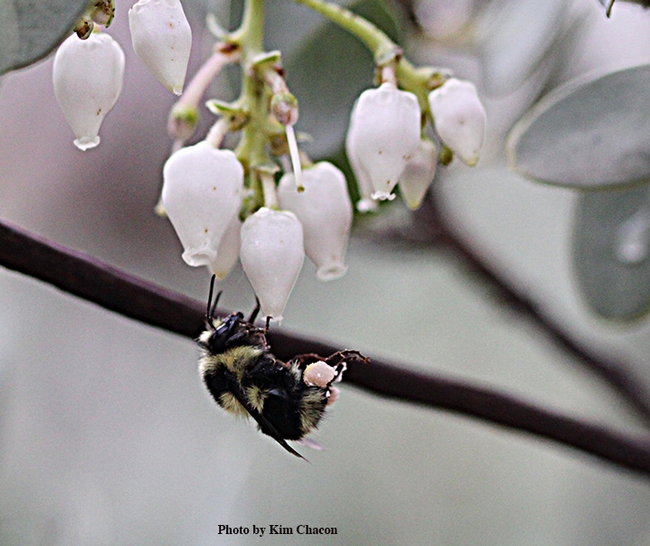
Check out the pollen on this black-tailed bumble bee, Bombus melanopygus, nectaring on manzanita, as photographed by Kim Chacon, UC Davis doctoral candidate on Jan. 10.
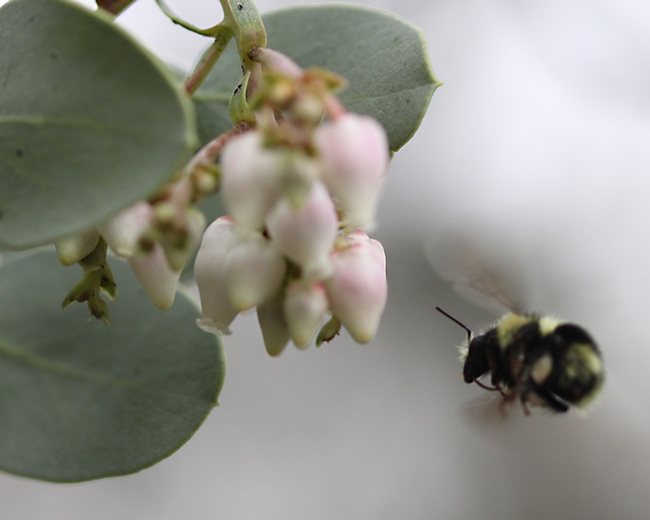
Black-tailed bumble bee, Bombus melanopygus, heads for a manzanita blossom in the UC Davis Arboretum and Public Garden. (Photo by Kim Chacon)
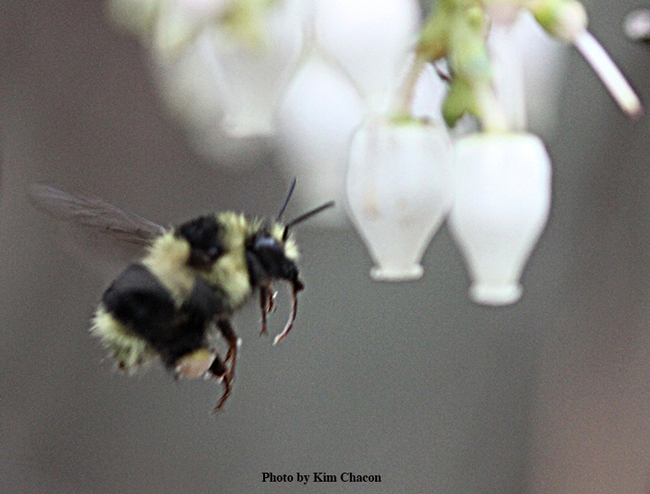
Close-up of a Bombus melanopygus heading for a manzanita blossom. (Photo by Kim Chacon)
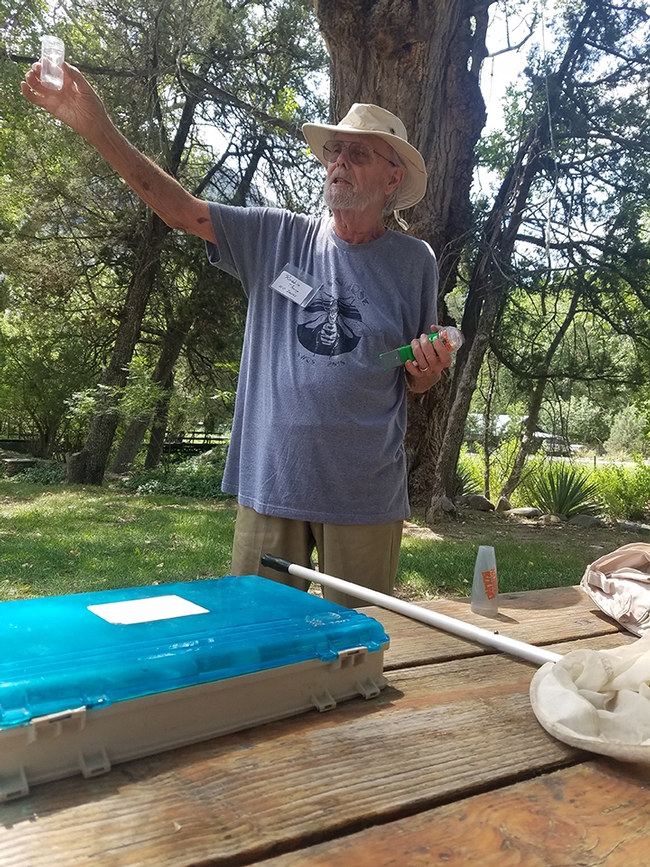
Native pollinator specialist Robbin Thorp, distinguished emeritus professor of entomology, teaching at The Bee Course last August. (Photo by Kim Chacon)